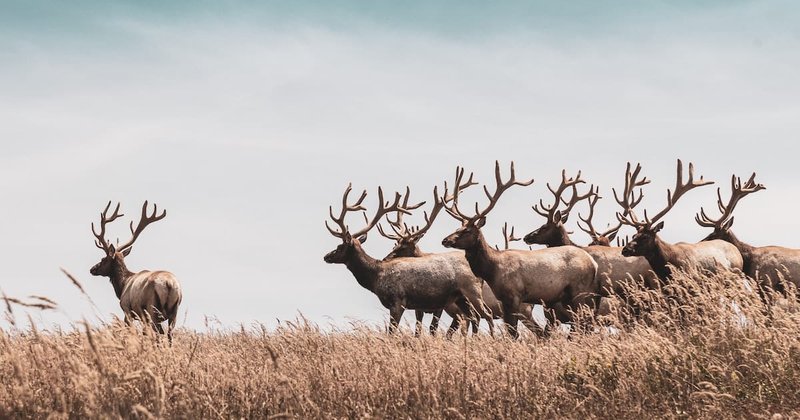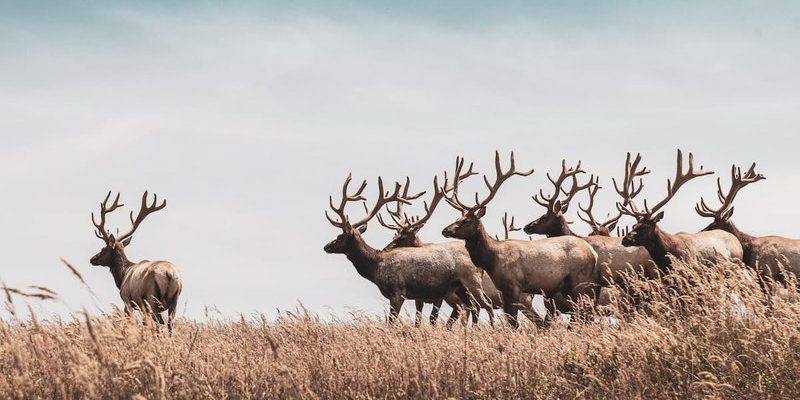
Much like a tree that’s been standing strong for years, elk populations have deep roots in the ecosystems they inhabit. However, various factors can strip away their habitat and resources, leaving them vulnerable. Understanding whether elk are endangered requires recognizing the balance of nature, human impact, and conservation efforts. So grab a cup of coffee, and let’s explore the intricacies of elk conservation!
The Status of Elk Populations
Elk are found in various regions, primarily across North America and parts of Asia. In the United States, the two main species are the Rocky Mountain elk and the Roosevelt elk. While some populations are thriving, others face serious threats. The International Union for Conservation of Nature (IUCN) classifies most elk species as “Least Concern,” but that doesn’t mean they are out of the woods.
You might be wondering why the conservation status varies. Factors like habitat loss, hunting pressures, and climate change play a significant role. For instance, in some areas, urban development has led to a reduction in suitable habitats, pushing elk into smaller spaces where food and resources are limited.
In contrast, certain regions have active conservation efforts that have helped elk populations rebound. For instance, in Yellowstone National Park, protective measures have led to a flourishing population. This contrast highlights just how variable the status of elk really is—some are thriving, while others are struggling.
Threats to Elk Populations
Elk face a variety of challenges that threaten their survival. One of the most significant issues is habitat loss. As cities expand and agriculture takes over, elk are pushed out of their natural environments. This reduction in space can lead to overcrowding in the remaining habitats, which increases competition for food and safety.
Another concerning factor is climate change. Changes in weather patterns can disrupt the seasonal availability of food and water sources. Additionally, warmer temperatures may affect elk’s migratory patterns, which they rely on to find food throughout the year.
Hunting also poses risks, especially if not managed properly. While regulated hunting can help maintain healthy populations, overhunting in certain areas can lead to significant declines. This is where conservation efforts are critical—they help ensure that hunting practices remain sustainable and do not endanger elk populations.
Conservation Efforts for Elk
Conservation organizations and government agencies are stepping up efforts to protect elk populations. One major tactic is habitat restoration. By replanting native vegetation and ensuring water sources are protected, these programs help create a healthier environment for elk.
Another key effort is regulating hunting. Many states implement measures such as seasonal restrictions and licensing to ensure hunters don’t take too many elk from a population. These regulations help maintain a balance between human interests and wildlife conservation.
Community engagement is also vital. Programs that involve local communities in conservation efforts can have a positive impact. For example, educating people about elk migration and habitat needs can foster a sense of stewardship. When communities care for their natural surroundings, elk benefit too.
Success Stories: Where Elk Are Thriving
Fortunately, there are success stories in the elk conservation arena. The reintroduction of elk in places like Yellowstone National Park has been a game changer. After being absent for over 70 years, these animals were brought back to their historic range in 1995. Today, the Yellowstone elk population is robust, demonstrating the positive effects of targeted conservation efforts.
Another success is seen in the National Elk Refuge in Wyoming, where habitat restoration and management have allowed populations to flourish. Regular monitoring and research help fine-tune conservation strategies, ensuring that elk continue to thrive in the region.
These examples show that with dedicated efforts and community support, it’s possible to turn the tide for wildlife like elk. It’s inspiring to see how action can lead to positive outcomes, reminding us of the importance of conservation.
What You Can Do to Help Elk
You might be thinking, “What can I do to support elk conservation?” There are plenty of ways you can make a difference, starting with education. The more you know about elk and their needs, the better equipped you are to advocate for their protection.
Consider supporting local conservation organizations that focus on preserving wildlife habitats. Donations can make a huge impact, funding projects aimed at restoring ecosystems and protecting wildlife. Even volunteering your time can be highly beneficial, whether it’s participating in habitat clean-up days or educational programs.
Also, be mindful of your own impact on the environment. Simple actions like reducing waste, choosing sustainable products, or supporting local farms can contribute positively to biodiversity and habitat preservation.
Final Thoughts: The Future of Elk Conservation
So, is the elk endangered? The answer isn’t a simple yes or no; it’s more nuanced. While many elk populations are doing well, others encounter serious threats that require our attention. Understanding these challenges is crucial for effective conservation.
Elk are more than just beautiful animals roaming the landscape; they play an essential role in their ecosystems. As we work to protect them, we also safeguard the health of our natural world. Whether you choose to educate yourself, support conservation efforts, or advocate for wildlife protection, every small action makes a difference.
The future of elk conservation depends on a collective effort, and together, we can ensure that these magnificent creatures continue to grace our forests for generations to come. Let’s be part of the solution!

